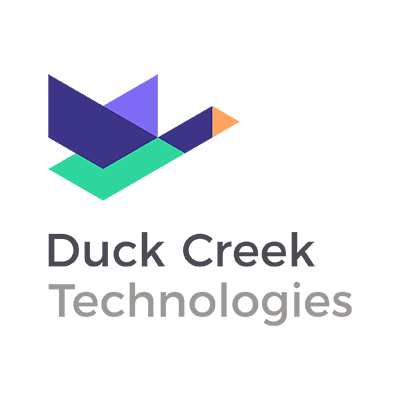The P&C insurance landscape is perpetually in motion, driven by evolving customer expectations, emerging risks, and rapid technological advancements. As we look toward 2026, the pace of change is not slowing; it is accelerating.
For insurers aiming not just to survive but to thrive, understanding and proactively responding to these shifts is paramount.
This article moves beyond the “what” of global property and casualty insurance trends to explore the “why” and the “how.” We will delve into how forward-thinking carriers transform insights into actionable resilience strategies and leverage future-ready platforms to accelerate innovation, enhance customer experiences, and deliver tangible results.
Hyper-Personalization and Proactive Engagement Beyond the Policy
The days of generic annual renewals are numbered. In 2026, policyholders will expect truly personalized experiences throughout their entire journey – from tailored quotes and flexible payment options to proactive risk mitigation advice and seamless digital claims interactions.
This is not just about good customer service; this is about building lasting relationships based on understanding individual needs and anticipating potential challenges.
- Why this matters: Drives higher policyholder retention, boosts satisfaction, and creates opportunities for organic growth through cross-selling and upselling.
- The insurtech advantage: Advanced policyholder engagement software combined with robust data management and analytics will be crucial. Insurers will leverage AI to analyze behavioral patterns, predict needs, and deliver contextual communications through omni channels.
“According to Gartner Group, 80% of your company’s future revenue will come from just 20% of your existing customers.” (Forbes, “Why Customer Retention Is King: The Evolution of Retention Marketing”).
The End of the Upgrade Cycle: The Rise of Evergreen Systems
For decades, core system modernization meant disruptive, multi-year upgrade projects that drained resources and stifled growth. Many carriers not prepared for the future of P&C insurance remain anchored to this paradigm.
By 2026, this paradigm will be a relic of the past. The demand for truly evergreen P&C core systems and integrated, strategic, stand-alone essentials via cloud-native SaaS will reach a fever pitch.
- Why this matters: Insurers can finally break free from legacy debt, reduce total cost of ownership, and ensure they are always on the latest, most secure, and most functional version of their software. This frees IT teams from the drudge of relentless upgrades to focus on innovation, not maintenance.
- The insurtech advantage: Organizations that have established this paradigm are investing to make it a reality across their entire suite of P&C insurance technology. This foundational shift will ensure continuous updates, instant access to new features, and the ability to always capitalize on innovative technology without the pain and drain of traditional upgrades.
“Agile organizations are designed to minimize handovers and maximize accountability on missions, allowing them to launch new products or update new pricing models up to five times faster.” (McKinsey & Company, “Scaling agility: A new operating model for insurers”).
Data as the New Underwriting Gold: Predictive Power and Dynamic Pricing
Data’s importance in insurance is undeniable, but 2026 will see a quantum leap in its application. Beyond traditional actuarial tables, insurers will leverage vast external data sources, IoT insights, and sophisticated AI/ML models for hyper-granular risk assessment and dynamic, real-time pricing.
Underwriting will become less about historical averages and more about predictive analytics and accuracy.
- Why this matters: Enables more profitable underwriting, faster and more accurate quotes, the creation of highly personalized products, and a significant competitive advantage.
- The insurtech advantage: Robust data management, reporting, and analytics software will be the digital backbone. Rating software infused with AI capabilities will allow for complex data ingestion and the rapid deployment of sophisticated pricing models, enabling true dynamic underwriting.
“Even the leading insurers can see loss ratios improve three to five points, new business premiums increase 10 to 15 percent, and retention in profitable segments jump 5 to 10 percent, thanks to digitized underwriting.” (McKinsey & Company, “How data and analytics are redefining excellence in P&C underwriting”)
Operational Excellence Through Intelligent Automation Across the Lifecycle
Pressure on expense ratios will continue to drive a focus on operational efficiency. In 2026, insurance automation trends will extend beyond straightforward process automation to intelligent automation in insurance lifecycle, leveraging artificial intelligence (AI, machine learning, and agentic AI to) manage complex workflows across policy, billing, and claims as well as integrated essentials such as loss control and reinsurance.
- Why this matters: Reduces manual errors, significantly lowers operational costs, free up human talent for more strategic tasks, and accelerates every core insurance process from First Notice of Loss (FNOL) to policy issuance and beyond.
- The insurtech advantage: Solutions designed specifically for P&C insurance are designed with embedded automation. Furthermore, producer software will empower agents and brokers with automated quoting, lead nurturing, and client servicing tools, allowing them to focus on sales and relationship building.
“Implementing technology that automates new business and underwriting functions helps insurers digitize their new business and underwriting, reduce unit costs, and improve margins.” (Celent, “New Business and Underwriting Systems: North America Life Insurance Edition”).
Navigating Volatility: Dynamic Risk Management and Proactive Control
The increasing frequency and severity of natural catastrophes, coupled with evolving cyber threats and other emerging risks, demand a more dynamic approach to risk management.
Insurers will move towards real-time loss control strategies, providing policyholders with tools and insights to mitigate risks before they lead to claims.
- Why this matters: Reduces claims frequency and severity, improves profitability, fosters deeper trust with policyholders, and positions insurers as true partners in risk prevention.
- The insurtech advantage: Data analytics platforms that integrate with geospatial and IoT data, coupled with cloud-native loss control software, will provide insurers with predictive capabilities. This allows for proactive engagement and targeted risk reduction programs, transforming the insurer’s role from payer to partner. For example, imagine agentic AI predicting event severity and exposure, verifying NOAA intel, and sending notifications while the humans-in-the-loop focus on policyholders.
“Loss control is a proactive risk management technique that aims to reduce the likelihood that a loss will occur and reduce the severity of the losses that do occur.” (Celent, “How insurers steer loss control systems in the modern era”).
Global Economy and Political Changes: Navigating Volatility
The global economy is balancing on a precipice, with potential recession and economic resilience shaping future paths. Amidst the normalization of real interest rates and revival of industrial policies, the US anticipates a GDP growth slowdown. Non-linear downside risks have emerged in global politics due to geopolitical uncertainty, adding complexity to diplomatic and strategic efforts to manage regional conflicts.
By 2026, these economic and geopolitical shifts will solidify as persistent forces, demanding a fundamental re-evaluation of traditional insurance strategies. The era of predictable, stable market conditions will be firmly in the past.
- Why this matters: These profound shifts require insurers to reassess their market strategies, account for variable interest rates in their financial planning, and adapt swiftly to potential regulatory changes influenced by political uncertainties. For P&C carriers, this means maintaining profitability and solvency amidst economic downturns, navigating complex supply chain disruptions, and managing increased claims severity stemming from geopolitical conflicts and trade instabilities.
- The insurtech advantage: Leading P&C insurers are recognizing that static risk assessment is no longer sufficient. The ability to leverage real-time data, advanced analytics, and sophisticated scenario modeling is paramount. This enables dynamic underwriting and pricing, allowing carriers to adjust terms and premiums proactively in response to evolving economic indicators, geopolitical tensions, and emerging risk patterns. It empowers insurers to move beyond merely reacting to losses, fostering a culture of proactive control and mitigation.
“P&C underwriters could proactively assess trends and current conditions with an eye on the future to identify market opportunities and drive profitable growth.” (McKinsey & Company, “Repositioning commercial P&C underwriting for market uncertainties”)
Workforce Evolution and Rise of ESG: Reshaping P&C Insurance
The P&C insurance industry is undergoing a profound transformation driven by two interconnected forces: the evolution of its workforce and the escalating influence of Environmental, Social, and Governance (ESG) factors. These shifts are not merely operational adjustments, but fundamental changes reshaping talent strategies, risk assessment, and the very purpose of insurance.
By 2026, the traditional insurance workforce will be significantly redefined, with automation handling routine tasks and a greater emphasis on analytical, strategic, and customer-centric roles. Simultaneously, ESG considerations, particularly climate risk and social inflation, will move from niche concerns to core drivers of underwriting, product development, and overall business strategy.
- Why this matters: For P&C carriers, adapting to these trends is critical for sustained profitability and relevance. The “war for talent” intensifies specialized skills, while an aging workforce necessitates knowledge transfer and upskilling. Neglecting ESG factors risks regulatory penalties, reputational damage, and mispricing of increasingly volatile risks, jeopardizing long-term solvency. Conversely, embracing these shifts unlocks new market opportunities, enhances brand reputation, and fosters a more resilient and innovative organization.
- The insurtech advantage: Insurtech’s role in this workforce evolution is pivotal. By leveraging intelligent automation, P&C insurtech solutions are actively solving the problem of manual, time-consuming underwriting and pricing processes. This frees up human capital by automating routine, rules-based tasks, allowing underwriters and other insurance professionals to pivot towards complex problem-solving, strategic relationship management, and innovative product development.
“Attracting and retaining younger talent, who prioritize technology and purpose-driven work, also becomes paramount, as 93% of leaders agree that using technology helps attract younger workers.” (McKinsey & Company, “McKinsey to Insurance: Get Younger, Get Digital and Get Flexible”).
Cybersecurity: Fortifying P&C Insurance Against Evolving Threats in 2026
In the increasingly interconnected and data-rich world of P&C insurance, cybersecurity is no longer just an IT concern; it is a fundamental business imperative. The escalating sophistication of cyber threats, coupled with the widespread adoption of AI and cloud technologies, demands a dynamic and proactive approach to security.
By 2026, the effectiveness of cybersecurity strategies will hinge on the intelligent application of advanced controls and continuous threat management, moving beyond traditional perimeter defenses to a more adaptive and resilient posture.
- Why this matters: For P&C carriers, robust cybersecurity is essential to protect sensitive policyholder data, maintain operational continuity, and preserve trust. Breaches lead to significant financial losses, reputational damage, and potential regulatory penalties. As AI becomes more embedded in core insurance processes, managing its inherent security risks (e.g., data bias, model manipulation) becomes paramount. Furthermore, a strong security posture is a competitive differentiator, assuring customers and partners of data integrity and reliability.
- The Insurtech Advantage: Insurtech solutions are at the forefront of enhancing cybersecurity for P&C carriers. By integrating advanced AI/ML into their platforms, insurtechs are enabling a new level of proactive defense. These controls hold the potential to drastically improve decision-making accuracy among enterprises and eliminate significant faulty and illegitimate information.
“By 2026, organizations prioritizing their security investments, based on a continuous threat exposure management program, will realize a two-thirds reduction in breaches.” (Gartner, “Top Strategic Technology Trends for 2024 report: CTEM”)
Preparing for 2026 and Beyond
The P&C insurance industry stands at a pivotal moment. The trends shaping 2026 are not just predictions; they are calls to action.
Those who embrace modern, flexible, and intelligent insurtech solutions will be best positioned to innovate, optimize, and differentiate themselves in a competitive and rapidly evolving market.
Learn how P&C leaders are preparing for 2026 and beyond with Duck Creek.






